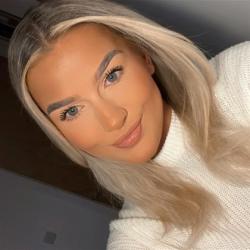If you’re clued up on skincare, chances are you’ve heard of hypochlorous acid. This superhero ingredient is becoming a new favourite on TikTok thanks to its gentle yet effective antibacterial properties. Originally used in medicine to fight off infection, speed up wound healing, and repair skin damage, this natural disinfectant is now being used in skincare to treat a variety of skin concerns ranging from acne to eczema.
If you’re reading this and wondering ‘what is hypochlorous acid?’, or you want to learn how to include it in your skincare routine, you’ve come to the right place. From its benefits to how often you can use it, we’ve broken down everything you need to know about this antibacterial A-lister.
1. What is hypochlorous acid?
Hypochlorous acid is an ingredient that can be naturally found in your body. It’s made up of white blood cells that help to ward off harmful pathogens, making it a must-have ingredient when it comes to keeping germs and infection at bay. Its bacteria-busting abilities have made it increasingly popular in the world of skincare, combining fast and effective results with a soothing finish.
Want to try it for yourself? ISOCLEAN’s Hypochlorous Spray is the perfect place to start, harnessing the powers of hypochlorous acid to calm, cleanse, and clear the skin in one simple spritz. (Pssst…you can bag yours now at BEAUTY BAY!)
2. What does hypochlorous acid do for your skin?
When used in skincare, hypochlorous acid acts similarly to how it functions in your body, tackling the bacteria responsible for acne, blemishes, and clogged pores. It purifies and cleanses the skin, leading to a more even complexion, and helps disinfect acne to lower the risk of infection and encourage quicker healing. When applied directly to blemishes, it can also notably reduce swelling and inflammation. Don’t be fooled by its potent results – it’s very gentle on the skin and won’t cause irritation, making it beneficial for all skin types.
3. How do you use hypochlorous acid?
Hypochlorous acid is used mostly in liquid products, often as a fine mist spray. This form allows for a quick and hygienic application, letting you target specific areas easily. With its antibacterial powers, many find it useful to keep a hypochlorous acid spray in their gym bags to fight off any germs from communal surfaces, while keeping body odour and acne at arm’s reach. Follow our simple five-step guide to get the most out of your spray:
1. Apply to clean, cleansed skin.
2. Hold the bottle 6-8 inches away from your face or the area you want to treat.
3. Close your eyes and mouth, then spritz the mist evenly across the skin or directly onto an area you’d like to treat.
4. Allow the spray to air dry on your skin. No need to rinse off!
5. Use the spray 2-3 times a day, ideally once in the morning and once before bed.
4. When should I use it in my skincare routine?
Hypochlorous acid can be easily slipped into your skincare routine for healthier-looking, happier skin. For the best results, spritz onto the skin immediately after cleansing your face. This will ensure that your skin is clean, while helping to remove any residual bacteria. Acting as a toner, it helps to calm and balance your skin and can be used as a base layer before applying any serums, moisturisers, or treatments. While it’s a great addition to your skincare routine, the spray can also be used throughout the day as a skin-purifying pick-me-up.
5. Is hypochlorous acid safe?
Yes, hypochlorous acid is completely safe to use. Not only does it occur naturally in the body, it’s also non-irritating, non-toxic, and gentle enough for even the most sensitive of skin.
6. Can you use hypochlorous acid every day?
Yes, hypochlorous acid can be used safely and effectively every day to keep skin healthy and balanced. Its gentle formula means that it can even be applied multiple times a day without causing harm or irritation.
7. When will you see results from hypochlorous acid?
The results from hypochlorous acid can vary depending on what you’re treating, but most people notice improvements fairly quickly. For example, if you’re using it to soothe irritation and redness, you can expect its calming effects to kick in within minutes to a few hours. When treating blemishes or wounds, you might see results within a few days. Overall, consistent daily use over several weeks is the best way to get the skin results you’re after.


